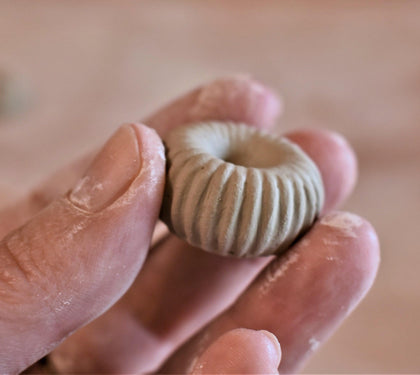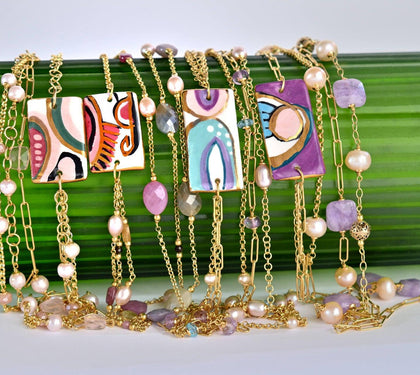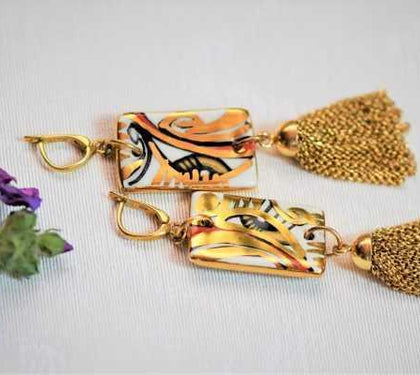History
Pearl jewelry have crossed the centuries remaining very rare and precious for the natural beauty of this gem and the colors of its mother-of-pearl, which shines with a thousand reflections. In the early twentieth century, Kokichi Mikimoto discovered a way to produce pearls by cultivating them and thus spreading Akoya pearls throughout the world. Today, the Akoya pearl is cultivated in pearl farms located in Japan, China and Vietnam.
The cold waters of the Pacific Ocean are the special secret of the Akoya oyster for how it creates its “mirror-like” shine. Specifically, colder water temperatures slow the oyster’s metabolism, allowing the nacre secreted around the pearl’s nucleus to compact into concentric layers. The more compact these layers are, the brighter and sharper the pearl’s shine.
China has been a leading producer of small Akoya pearls for many years. Today, very few Akoya pearls come from China, which has established itself for the large quantities of freshwater pearls put on the market. Freshwater pearls are recognized by their pink color.
A smaller segment of the Akoya pearl farming community is Vietnam; with rich and unusual colors such as blue, gray-blue, gold… even pistachio green, Vietnamese pearls have a very thick nacre and a beautiful shine and nowadays can only be found at major pearl shows and auctions in Hong Kong.
Assessment
The value of a pearl depends on its beauty, which is given, in addition to the three specific characteristics of the true pearl (splendor, luster and orient), by the shape, the size or better by the weight, and the absence of defects. The unit of weight used for pearls is the grain = 1/4 of a carat = 1/20 of a gram.
The shine , or the gleam of the reflected light that spreads through the layers of nacre as it hits the pearl, is the most important and easiest way to determine the quality of a pearl. Good quality pearls should have a bright, reflective luster, not a dull one. Jewelers also use the term luster to measure the sharpness of objects reflected on the surface of the pearl. This can be quantified by how detailed that reflection is (i.e. you can see the entire face) or by how sharp and defined the reflected light sources appear on their edges. The sharper the edges of the reflected light sources, the better the luster.
Under the microscope, the outer surface of the pearl appears to be covered with fine wavy lines and small grooves. The highest quality pearls will have a flawless surface free of scratches, blemishes, and imperfections. Of course, it is almost impossible to find a pearl with zero imperfections. As the pearl grows, the oyster will leave some type of mark on the pearl, so small irregularities are acceptable and sometimes useful as a test of authenticity.
Regarding the shape, the more the pearl The rounder it is, the higher the quality. Perfectly round natural pearls are the rarest.
Color has three components: the dominant, general color of the pearl, one or more translucent colors that lie above the dominant color, and the orient, produced by a phenomenon of light decomposition, giving a sense of deep translucency to the iridescent rainbow colors that shine on or just below the surface of a pearl. Pearls come in almost every color, from white to green, blue, black, and gray. The rarest color, found in cultured pearls, is the gold of the golden South Sea pearl.
Another element that gives value to the pearl is the nacre which is the crystalline substance (aragonite) secreted by an oyster or mollusk that accumulates around a small piece of mantle tissue that was implanted during the cultivation process. The thicker the nacre, generally the more durable the pearl.
A pearl is measured by its diameter, and a natural pearl typically ranges from 1.8 to 6 millimeters, while a cultured pearl ranges from 3 to 18 millimeters. The size of a pearl depends on several factors such as the species of the mollusk or oyster, the cultivation periods, and the size of the nucleus.
Geographical origin
In Japan, Akoya pearls are produced, easily recognizable by their white or creamy beige color. Akoya pearls show a very clear and brilliant luster. Only the Akoya cultured pearls with the highest quality and luster are the "Hanadama". Loved for their intense mirror-like luster, the iridescent "Aurora" effect, the certified thick nacre depths, Hanadama pearls They are one of the rarest pearls in the world.
Akoya pearls will be perfectly round across all pearl grades, while the vast majority of freshwater pearls will be slightly rounded or oval and potato shaped.
Additionally, freshwater pearls generally have a softer, more “satin” luster that tends to be noticeably more diffused around the edges of the reflected light sources. Both types of pearls come in classic white body colors, with traditional shades of pink, silver, and cream. Most freshwater pearls will have cream and pink undertones, and more Akoya pearls will have a silver or pink undertone.
Then there are the South Sea pearls , also known as Australian pearls. Their color ranges from silver to gold. South Sea pearls are known worldwide for their natural silvery-white and gold colors and their larger size. Both white and golden pearls generally start at 8 – 9 mm and regularly reach up to 17 mm … and larger, reaching over 20 mm at their largest sizes. These pearls are grown in the warm tropical waters of northern Australia, Indonesia, and the Philippines. but the finest golden pearls come from the Philippines
Perfectly round pearls are the most prized, but both white and golden South Sea pearls have a wide variety of pearl shapes to choose from including baroque, drop, oval, button, and free-form baroque. Their incredibly thick nacre can average 2-4mm thick.
The pearl of Tahiti , Finally, it is also called black pearl and are famous worldwide for their dark body colors in shades of charcoal gray to true black. From colorful peacock to cool shades of tropical green, blue, eggplant, silver and gold, pink and cherry. Tahitian pearls have a very thick nacre and generally exhibit a softer, more satiny luster. However, most high-quality Tahitian pearls, especially in the smaller size ranges, will exhibit a sharper, highly reflective luster that approaches the “mirror” luster of Japanese Akoya. Tahitian pearls are one of the largest types of pearls around and generally range from 8-9m up to 15-16m and sometimes even larger. The most sought after are the perfectly round pearls, followed by smooth drops and then baroque pearls of all shapes.




